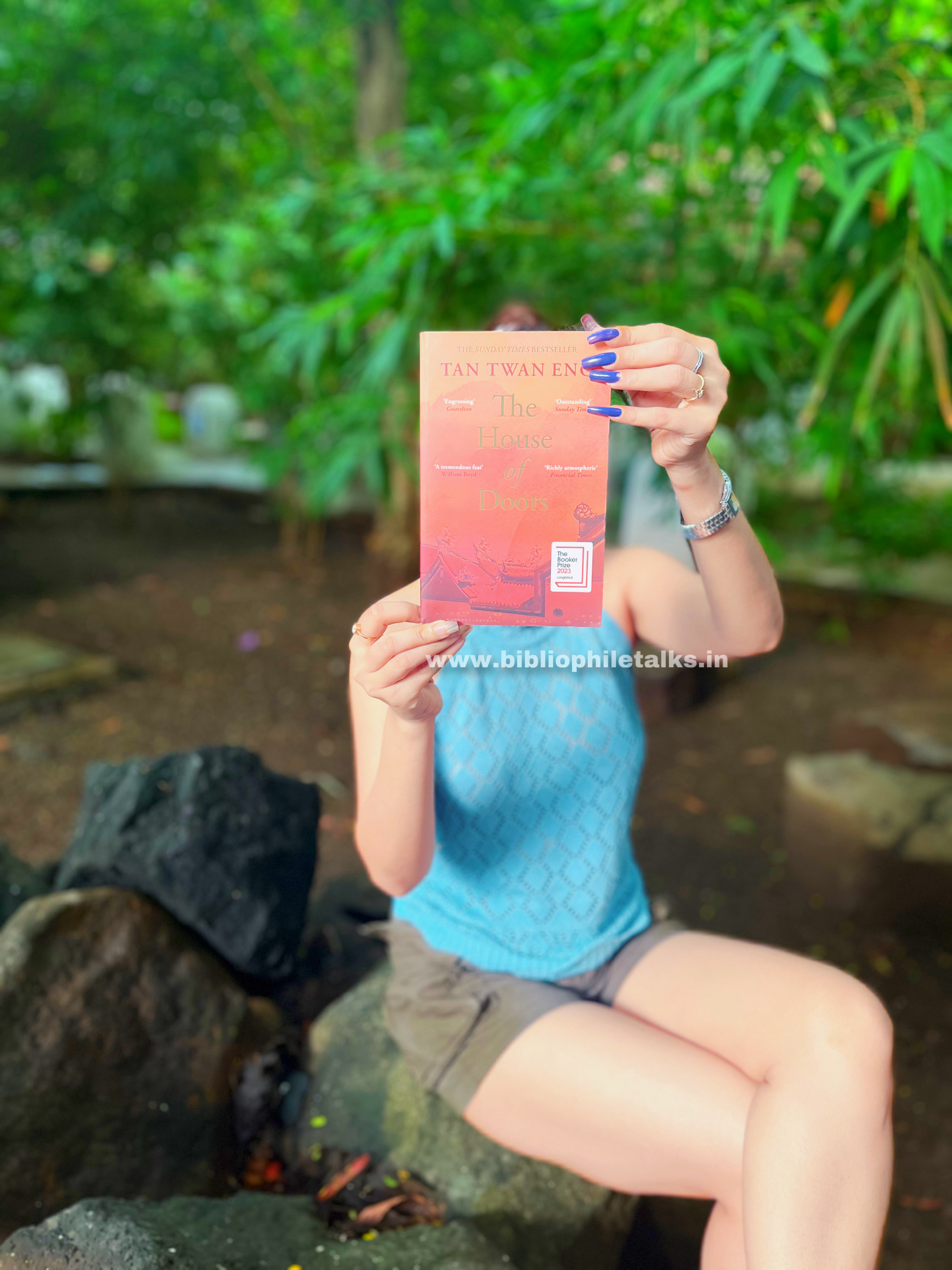THE HOUSE OF DOORS

𝗧𝗵𝗲 𝗛𝗼𝘂𝘀𝗲 𝗢𝗳 𝗗𝗼𝗼𝗿𝘀
𝗕𝘆 𝗧𝗮𝗻 𝗧𝘄𝗮𝗻 𝗘𝗻𝗴
𝗣𝘂𝗯𝗹𝗶𝘀𝗵𝗲𝗿: 𝗖𝗼𝗮𝗻𝗼𝗻𝗴𝗮𝘁𝗲 𝗕𝗼𝗼𝗸𝘀
𝗣𝗮𝗽𝗲𝗿𝗯𝗮𝗰𝗸: 𝟑𝟐𝟎
𝗣𝘂𝗯𝗹𝗶𝘀𝗵𝗲𝗱: 𝟏𝟖𝐭𝐡 𝗠𝗮𝘆 𝟐𝟎𝟐𝟑
𝗚𝗲𝗻𝗿𝗲: 𝗛𝗶𝘀𝘁𝗼𝗿𝗶𝗰𝗮𝗹 𝗙𝗶𝗰𝘁𝗶𝗼𝗻
𝗠𝗮𝗹𝗮𝘆𝘀𝗶𝗮𝗻 𝗟𝗶𝘁𝗲𝗿𝗮𝘁𝘂𝗿𝗲
𝗥𝗲𝗮𝗱𝗶𝗻𝗴 𝗬𝗲𝗮𝗿: 𝟐𝟎𝟐𝟓
The novel opens with an older Lesley seated on her veranda in Africa, where she receives a copy of The Casuarina Tree by W. Somerset Maugham. This moment acts as a portal, transporting her—and us—back to Penang and to the events that unfolded between 1910 and 1921. The early chapters delve into Sun Yat Sen’s revolutionary efforts in Penang, as he sought support and funding from the Straits Chinese in his mission to overthrow the Qing dynasty.
In 1921, Maugham himself, accompanied by his secretary and lover Gerald, visits Lesley and her husband Robert. Over several evenings, Lesley recounts pivotal memories from the past, including the infamous murder trial of her friend Ethel Proudlock, an Englishwoman residing in Kuala Lumpur. Given Maugham’s well-known tendency to draw fiction from fact, Lesley’s decision to share such intimate stories with him feels daring.
The book is rich in thematic layers: a high-profile murder trial, glimpses into Maugham’s private life, political intrigue involving Chinese revolutionaries, and the social tapestry of Penang’s multicultural society—Europeans, Straits Chinese, Malays, and others. The synopsis had me expecting a gripping tale of scandal and suspense, one that would weave these elements into a riveting narrative. However, the reality fell short. While the premise promised intensity and historical depth, the execution fell short of emotional engagement. Despite the political rebellion, complex relationships, and murder mystery, the narrative felt curiously flat. Maugham’s supposed interest in Lesley’s stories never felt sincere; instead, their exchanges came across as detached. The prose leaned heavily on description, making the pacing feel inconsistent—sometimes brisk, but more often slow and meandering.
What surprised me most was how surprisingly mundane the story turned out to be. Dinner parties, afternoon teas, and superficial conversations among British expatriates in colonial Malaysia took center stage. The focus on two English protagonists in a Malaysian setting created a disconnect, especially for a reader hoping to be immersed in authentic local culture and traditions. The Malay characters, when present, were sidelined—reduced to background figures or inserted merely for wisdom or romance.
While the book does succeed in evoking the atmosphere of early 20th-century Malaysia and presents a compelling historical backdrop, its character development is noticeably lacking. The language is accessible, and the narration flows well, but the emotional core—the soul of any novel— was missing. In this case, the author paid more attention to historical accuracy and setting than to crafting characters that readers could connect with. The main reason for my disappointment is that I had high expectations. My expectation was for an in-depth exploration of culture, but what I found was a story that felt emotionally disconnected.
This book may appeal to readers who enjoy slow-burning, historically grounded narratives, particularly those interested in colonial politics, cultural transitions, and the nuances of British expatriate life in Southeast Asia. However, it may not resonate with readers seeking character-driven storytelling, emotional depth, or vivid portrayals of Malaysian traditions. For me, it was a beautifully painted scene that lacked the heartbeat I look for in fiction.
My Rating:
3.5/5
NOTE: In this blog, the CONTENT and PICTURES are owned by Samayra Singh, and cannot be used or distributed without permission. Strict legal action will be taken against any infringement.